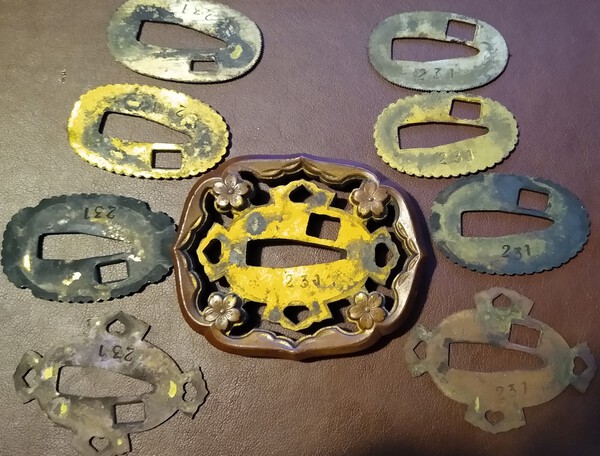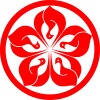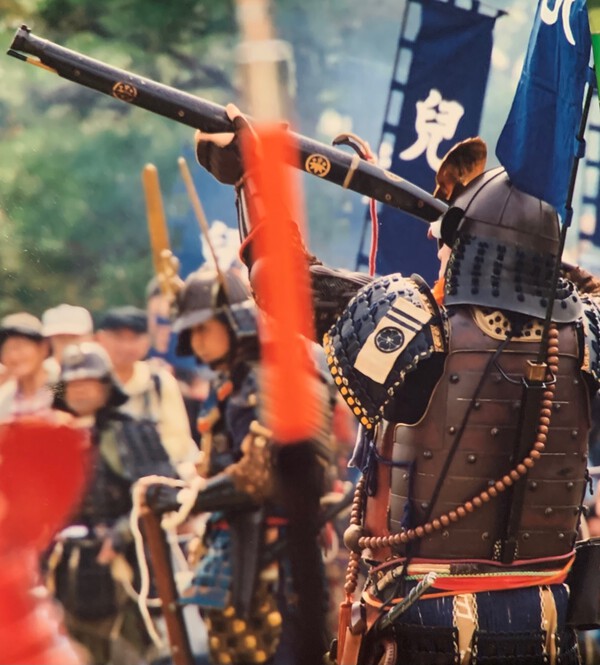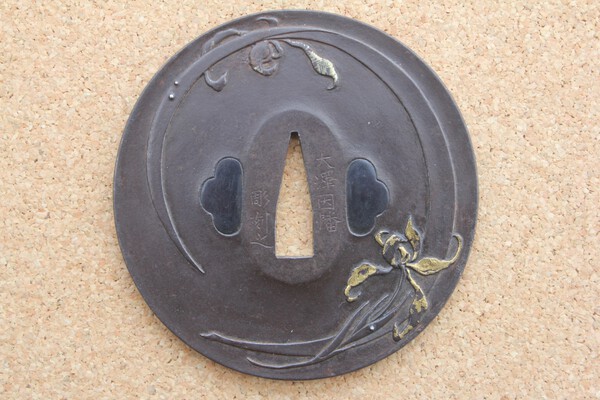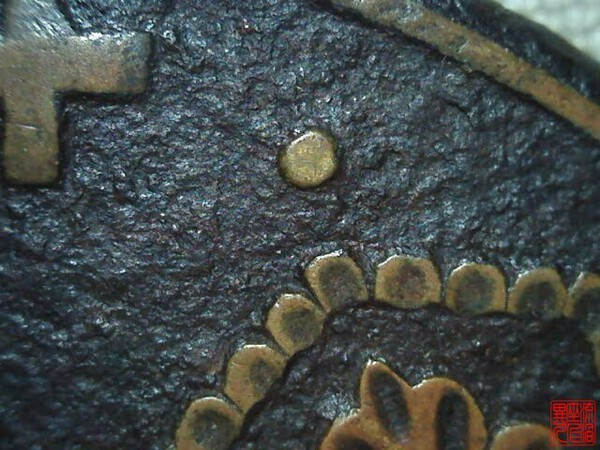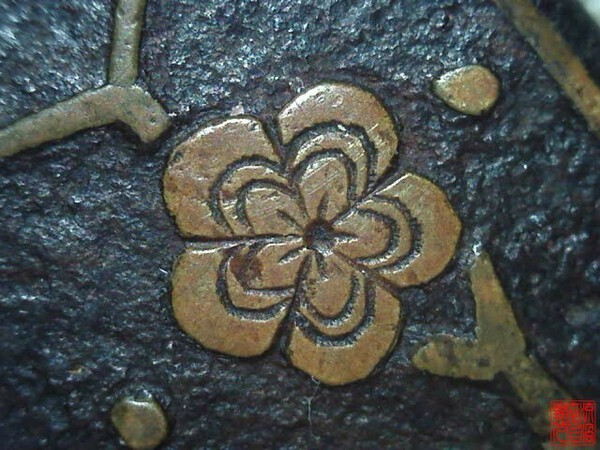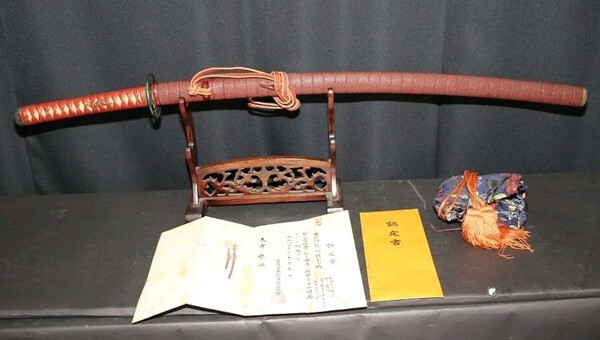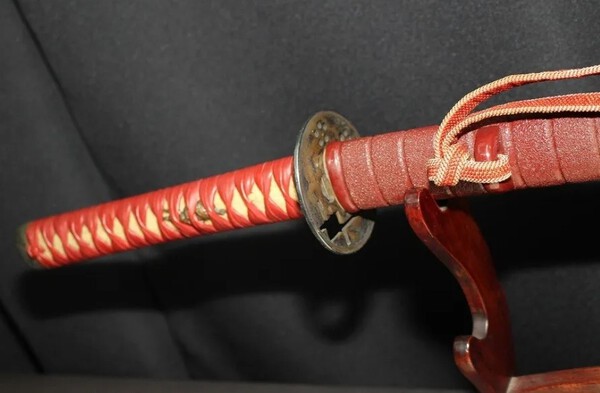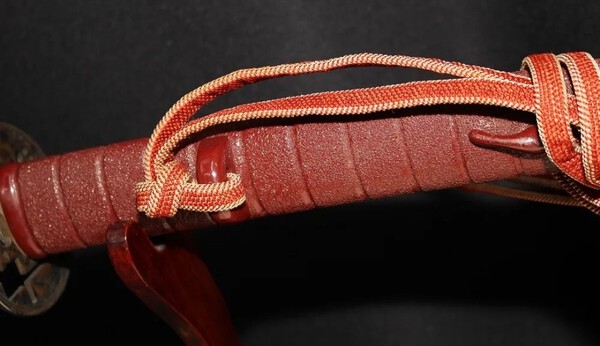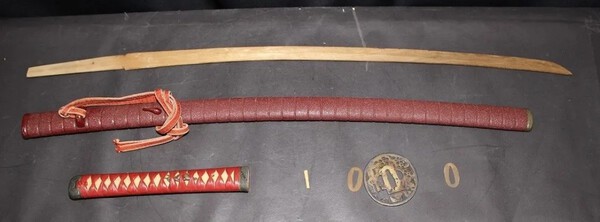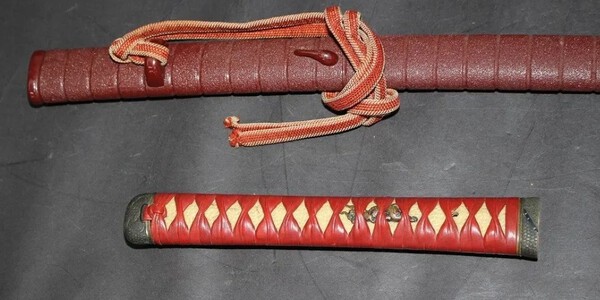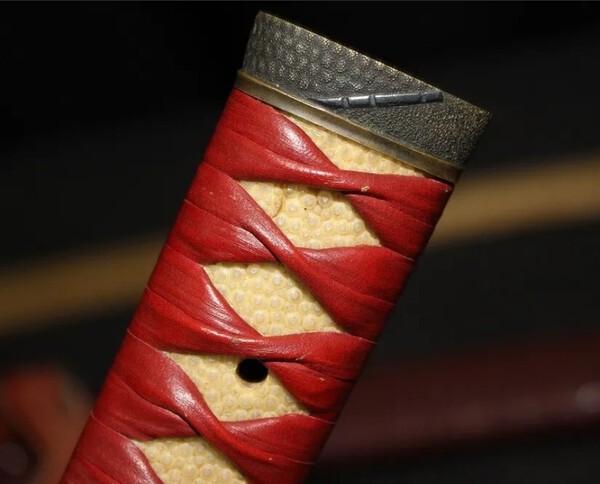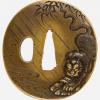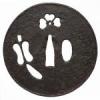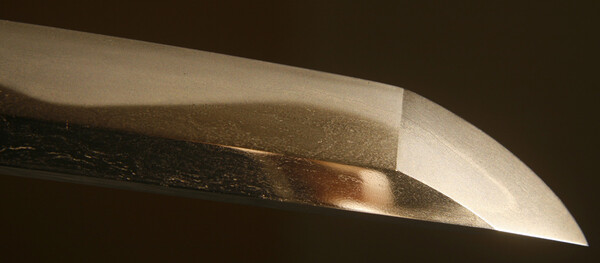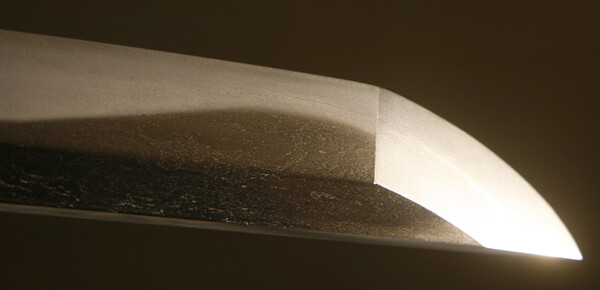Leaderboard
Popular Content
Showing content with the highest reputation on 08/17/2022 in all areas
-
We have a thread for Gendai-to but not gendai fittings. I am sure there are some great pieces out there. I shall start us off with my latest acquisition, a daisho set of tsuba by the premier American swordmaker Keith Nobuhira Austin. Quite chuffed with this find as it fits nearly everything about my collecting and experience... -t2 points
-
Nice one John " The term "Shishi Jinjin" (志士仁人) is derived from the phrase in the fifteenth chapter of the Analects of Confucius, "Eiringuo," which means "to kill oneself in order to do benevolent deeds. Mostly, the term refers to those who led revolutionary movements with the idea of the Emperor and expulsion of the barbarians." Foo Dogs on the other hand... "Guardian lions are referred to in various ways depending on language and context. In Chinese they are traditionally called simply shi (Chinese: 獅; pinyin: shī) meaning lion—the word shi itself is thought to be derived from the Persian word šer.[2] Lions were first presented to the Han court by emissaries from Central Asia and Persia, and were already popularly depicted as guardian figures by the sixth century AD.[3] Today the guardian lions are more usually specified by reference to the medium or material, for example: Stone lion (石獅; Shíshī): for a stone sculpture; or Bronze lion (銅獅; Tóngshī): for a bronze sculpture. and less commonly: Auspicious lion (瑞獅; Ruìshī): referring to the Tibetan Snow Lion or good fortune" Please call me Tom and please keep those tsuba coming... -t2 points
-
Hi Thomas I wasn’t going to post this Gendai tsuba as I had already done so under a different thread, but as you have only had one reply so far I thought maybe I should post it again. This large copper tsuba is inscribed Morihira (Yanagawa Morihira, 1899-1971). I don’t like to claim whether signatures on tsuba are genuine, so many fakes about, but the tsuba does appear to similar in style to other works by Morihira that have appeared at auction (https://www.bonhams.com/auctions/21101/lot/248/?category=list, and Aoi Art, order number F21216), that is a copper tsuba decorated with gold and silver gilding, katakiri and kebori engraving, scratched gold kodzuka plugs and flower shaped tegane punch marks. The shape of the tsuba may be best described as sumi-iri-kakagata (lit: notched in square). The front (omote) of the tsuba shows both a shishi and peonies, whereas the reverse (ura) only shows the shishi. Interestingly, the shishi on the omote has a silver body and a golden mane and tail, whereas the combination of silver and gold is reversed on the ura. The heads on both animals is copper. Shishi are often represented as playful creatures, but these two are muscular with a fearsome pose and the silver shishi has a head which looks rather like Hannya, the Japanese female demon. The engraved peonies on the omote are coloured with silver and gold gilding and the petals are in a darker shade of silver. The outlines are defined in katakiribori (half cut carving) and kebori (hair carving) and, particularly the silver, darkened to add extra tonality to the design. The nakago ana has four 32(?)-petal chrysanthemum punch marks on each side, purely for decoration and the tsuba is signed on the lower right face of the ura Morihira. There is also a single kozuka hitsu ana, filled with a gilt cat scratched plug. Shishi are mythical guardian lions in both China and Japan and it is also the name given to a group of political activists (Ishin Shishi 維新志士) in the late Edo period who opposed the westernisation of Japan. The peony is regarded as the king of flowers and in Japan symbolises bravery, honour and good fortune. It is likely that this tsuba was made in the 1930’s when Japanese militarism was at its peak. However, if this was the intention of Morihira then I think that he failed. Instead of the shishi being fearsome macho guardians they appear rather camp (IMHO). Possibly other potential buyers thought the same, which is why I was able to buy it cheaply in comparison to other Morihira tsuba that I have seen. When this tsuba first came up for sale I had no interest in it and so it seems nor did anyone else as it was unsold. Six months later it came up again and I wanted to buy something in remembrance of my nephew, Gary, who had died shortly before the sale. Gary was very much an extrovert ‘in your face’ type of guy and I this tsuba reminds me very much of him. Height: 8.75 cm, Width: 8.4 cm, Thickness (rim): 0.7 cm; Nakago: 0.4 cm, Weight: 254 g Best regards, John2 points
-
2 points
-
Friends, this has been a very useful thread. Thank you. MNB at its best. I think I know much more about brass inlay than I could have suspected. The quality of the work is clearer to me. I thinking my assessment of early brass inlay is not higher than it was (I still find it challenging) but as a result of this thread I feel we/I understand it better. Like I said, Thanks. Peter2 points
-
Andrew, The other guys can answer you questions about the tsuba. The fuller groove, or bohi, is found on all sorts of sword blades from all eras. Their reference to it concerning zoheito is that they almost always have them. Yours doesn't, so maybe the whole thing, except the tsuba, is a late-war assembly. I have seen gunto with civil tsuba, as if the owner had one from back home and used it to personalize his sword. That is an option. Other options - shortage of supplies at the end of the war, so shops used what they had on-hand; and finally, as suggested above, post-war efforts by an owner to complete a gunto with missing parts. Any of these are possible.2 points
-
On the plus side Adam, it doesn't need to fit. Just display the koshirae and the blade in shirasaya with it. All the best.2 points
-
2 points
-
Dear John. Assembly numbers are used to make sure that the same parts all fit the blade when the sword is made. These are not generally mass produced in the sense of interchangeable parts so the small shop where this was assembled stamped the number into all the bits so that once they fitted they stayed with that sword. If Naval Shore Patrol then there would be fouled anchor engravings at the end of the scabbard and the back strap of the hilt. Here is one of those. Note the straigter hilt, the absence of the shaped scabbard throat and the lack of side ears on the back strap. Also yours has acrew at the end of the pommel, Naval swords of this type generally have a flower shaped head here. Others will add to this but Police might be the answer. All the best.1 point
-
Andrew, The first couple pics you posted didn't really show the blade at all. The nakago (tang) only has very light coloring, making me think it was possibly Navy stainless. Alot of the Naval stainless blades had nice file marks, like yours. Now that you have included more pics, I can see an actual hamon in just one picture. So it is not a Navy stainless blade. That leads to the question of oil or water qwenched and if it is gendaito or Showato. The file marks on the habaki are not normally found on wartime blades, so that adds to the curiousity of this one. Lastly, the tsuba. Again, with limited pics, it is hard to tell what it is from. Once you get it in hand, disassembled, and additional pics taken, we can help you out more. No worries though...you have an actual WWII Japanese sword that is not a replica or Chinese knock-off. My only concern was that the seller advertised it to you, and everyone else, that it was an NCO or type 95. That is 100% incorrect.1 point
-
Dear Paz. I'll message you. All the best.1 point
-
Yes a very interesting post So many times I've stated katana or wakizashi size tsuba just by looking at the dimensions but unless the nakago ana was over or undersize I never really took this into consideration Sometimes I have a DOH moment like this one from GRC Haynes also pointed out that the size of tsuba had no consistent relation to the size of the blade, so to get a better sense of what was fitted to what, just look at the size of the nakago-ana. Makes me feel a bit silly.1 point
-
1 point
-
1 point
-
1 point
-
I see it on Grey Doffin’s site: https://www.japaneseswordbooksandtsuba.com/store/Books1 point
-
Before coming to conclusions as to provenance, lets wait until it arrives and see exactly what kind of markings are on the nakago. In addition, the habaki can be taken off and an overall view of the blade can be seen. Patience is a human virtue after all.1 point
-
I just checked Amazon (USA) one is listed at $136, maybe the algorithm had to reset after it sold out. Abe books as well: https://www.abebooks.com/9784770031303/Facts-Fundamentals-Japanese-Swords-Collectors-4770031300/plp1 point
-
Dear Curran Thank you for your considerations. I started this post to learn something new about Onin and Heianjo, and so it is. I will ponder on your considerations. Regards Luca1 point
-
1 point
-
Dear Curran. Thank you for your thoughts, I'll keep studying. And thank you Luca for posting your tsuba and those photographs. All the best.1 point
-
My goodness, he speaks French too! Well in that case, it is all French to me! Chinese: 棒棒君 = BÀNG BÀNG JŪN = Master Bang Bang. (君 Japanese suffix for a boy's name & Master as in referring to a young boy in English) For those born after circa 1980, it may come as a surprise that my mother would address letters to me with the prefix Master followed by my name! Edit: Now that I think about it, all correspondence used a prefix such as master, miss (Ms.), mister (Mr.), misses (Mrs.). Every household would have a copy of Emily Post's or Amy Venderbilt's books about etiquette and the rest can be found within these books. Emily Post Amy Vanderbilt1 point
-
A quick way to spot an early zōheitō is to look and see if it has a blade fuller or not.1 point
-
1 point
-
Andrew, I appreciate your interest in WWII! It's what I collect as well. Recommend spending some time reading Ohmura's invaluable, and free, website on gunto Military Sowrds of Imperial Japan. There's some history, but mostly it's page after page of excellent photos of the various types. You'll quickly get a free education on the various Army, Navy, officer and NCO types. This style with civil tsuba and leather clad wooden saya often hold a civil blade brought to the war and refitted. You're lucky to still have the leather locking strap! I don't study them closely, but maybe @BANGBANGSAN and/or @Kiipu can tell if this is an early war zoheito, which was an early attempt at making mass produced factory blades. Ohmura has a page on that too! Can we get a photo of the other side of the nakago (tang), too? Also, full length, bare blade; and a good clear photo of the blade tip?1 point
-
Hey Andrew. Just giving my opinions on this but wanted to get the ball rolling for you. All the parts you have look to be WWII vintage. Nothing in this assembly would have come from a type 95 NCO sword. What I do see is a type 94/98 tsuka handle in good shape. Hard to tell much about the tsuba handguard from the pics shown. My opinion is that it is a late Edo period plain tsuba and has been painted brownish redish along with a couple of the seppa spacers. The blade looks like a type 97 navy kaigunto stainless blade but cannot say for 100% sure without seeing closer pics of the blade itself. The saya scabbard looks to be a type 98 with leather cover. Form what I can tell, you have a mixture of a WWII sword. Hopefully you didn't break the bank on it. As a word of advice, post in the wanted section what you are looking for and a price range. You should be able to get a 100% authentic type 98 (depending on condtion, type of blade, etc.) in a range from $750-$1250. Dan1 point
-
I've never much worked metal in any fashion. This is really more of a question for Ford or Markus Chambers. What little I know is from my mother's years as a bench jeweler with a small lab in the house. That doesn't hold a candle to their many many years of experience. This is to say that I think my own opinions are largely derived from that which I have read in various books + just the basics of bench jeweler knowledge. I see in #1 that which I interpret as being constructed one way. In #3, I see it differently in a way which I interpret as how I have read Heianjo to be constructed. To my eyes, it has to do with the edges of the inlay and the way the iron around it is worked. If I go any deeper than that, I'm going to get tripped up in terminology that I will probably use incorrectly. Then Ford will tell me I am all wrong. Just in recent years have I gotten good at saying what is "Onin" vs "Heianjo" before I see the NBTHK papers. It is still an area where I take my own opinion with a pinch of salt (phrase I used recently in the Saotome thread). In terms of metal movement, I don't have the terminology. I only can1 point
-
Dear Curran. Could you please expand on what you mean by pre-cut? I know that some have suggested that some inlay is pre-cast and some cut from sheet but as a metalworker I have a hard time getting my head around how one might tell the differrence. Is there anything that might be detectable or describable here? Great photographs, Luca, thank you for posting these. All the best.1 point
-
I tried to form my opinions before looking at what you wrote: [1] The first one, I would have said "Onin" partially because the mon (circle with 2 or 3 lines). Also the iron looks slightly better to me. The "brass" looks extensively hammered in and carved from there. In my head, "Onin" [2]The second one, honestly... I wasn't sure. It has some of the Onin worked feel to the inlay, but some pieces look pre-cut. That would have been a tough one for me, and I suspect a papering organization would just go to the more cautious Heinajo attribution? [3] I can see what I believe to be pre-cut to the "brass", pieced together and done up not too different from the way you do a stained glass window. Yet it has a large amount of inlay. In some ways, it looks like more work than the Onin tsuba. Still, I'd go Heianjo on it. I admit to thinking it a very pretty example. While the price difference between Onin and Heianjo can be fairly large, sometimes the Heianjo ones are just as pretty or prettier. I semi-admitted I had one that was published in three books. Two books said Onin, but one by a very respected authority said Heianjo.1 point
-
I have this one on my site: https://www.japaneseswordbooksandtsuba.com/store/tsuba-%26-kodogu/q717-shinsaku-iron-tsuba# If anyone knows the smith's name let me know please. Gre4y1 point
-
Item No. 252 Iron Tsuba with gold and silver inlay 8.40 cm x 8.30 cm x 0.39 cm Subject of Iris ? ( unlikely ), Lily ?, Orchid ? Any botanists out there ? Signed Osawa Inaba chokoku kore , apparently the signature of Osawa Hokyo who was active in the latter part of the 18th cent. In very good condition for a tsuba the best part of 250 years old . Deep lustrous dark brown patina with the inlay virtually intact. One of my favourite themes , depictions of stately flowers and leaves .1 point
-
1 point
-
1 point
-
1 point
-
From here it looks like Maru ni Sasa-lindo. In the Edo Period it was used by the Ishikawa Lords of Kameyama Castle in Isé, (tracing their roots back to Genji).1 point
-
I, too, would like to see the rest! Anyone recognize the floral image on the menugi? It's not sakura. So maybe this was a civilian purchase, re-fitted for the war?1 point
-
Watching the video and other articles about Miura Hiromichi's great skill and devotion to the katchu tradition was one of the inspirations behind my own interest in this field. Rest in peace, Miura-sensei.1 point
-
My sword came back from NBTHK shinsa with Hozon origami. Below is a link to the sword before the new polish by Bob Benson. viewtopic.php?f=15&t=13572&st=0&sk=t&sd=a&start=15 It's remarkable to compare the sword before and after polish. This sword is interesting to me for two reasons. First, it sports an o-choji hamon, which is not typical of Yasuhiro. Second, it is suriage by about 2". You can see from the pictures (compared to ubu nakago pictures from Fujishiro and Nihonto Koza, and various papered examples on the web) that the bottom mekugi ana is the original, and the sword has been suriage by just a little more than 2". Its current nagasa is 27 1/8", making its original nagasa 29" - quite long for Yasuhiro daito whose signed extant works hover around 25"-26". In the monouchi, there is clear utsuri, but I have not been able to capture the utsuri in the pictures. I think Ishido Yasuhiro is ranked Ryowazamono from what I can find on the web. If this is incorrect, please let me know. The sword is quite nice and worth the resources I spent on polishing, having new shirasaya made, and papering. Pictures are posted for your enjoyment. Constructive comments, positive or negative, are always welcome. Regards, Hoanh1 point
-
A little addendum here that may be relevant. Many years ago I met one of the guys who had guarded Himmler just after his arrest, and wanting a souvenir he raided Himmler's suitcase and took the Wehrmacht penknife from it, and in order to avoid his theft being discovered then replacing it with another that he had picked up on his way through Germany, . Later he found out that every squaddie in the detail had done just the same. Someone had Himmler's penknife....... but no one knew who!0 points
This leaderboard is set to Johannesburg/GMT+02:00







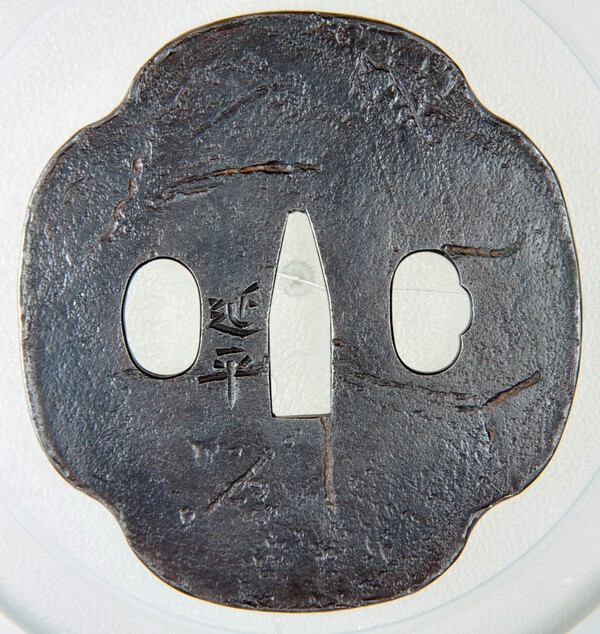



.thumb.jpg.bc10b59027a00aa142dce0349f3ba9e0.jpg)

.thumb.jpg.8707c4a143416f2ddebe6088461dfb65.jpg)
.thumb.jpg.88a2774b8e1824b5abf1cfac4c931d58.jpg)
.thumb.jpg.91c91c811284cf3df32b6d6d660abaac.jpg)
